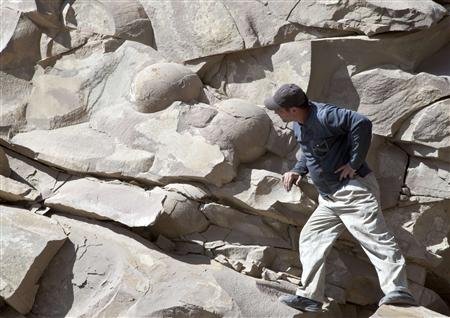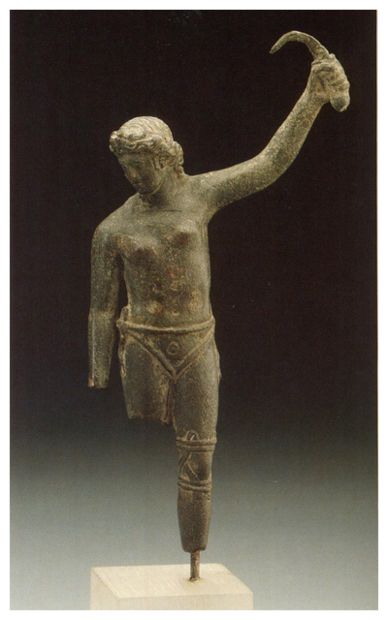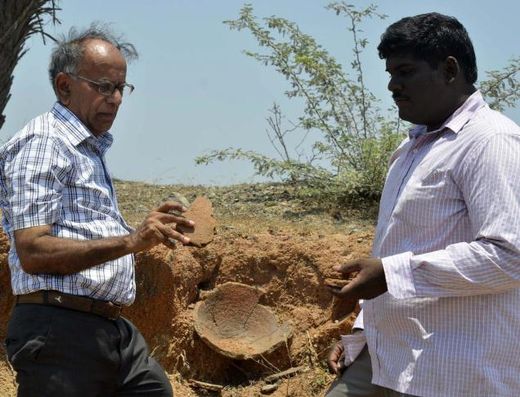The Jews had significant competition in antiquity when it came to worshipping Yahweh. Archeologists have discovered a second great temple not far from Jerusalem that predates its better known cousin. It belonged to the Samaritans, and may have been edited out of the
Bible once the rivalry had been decided.
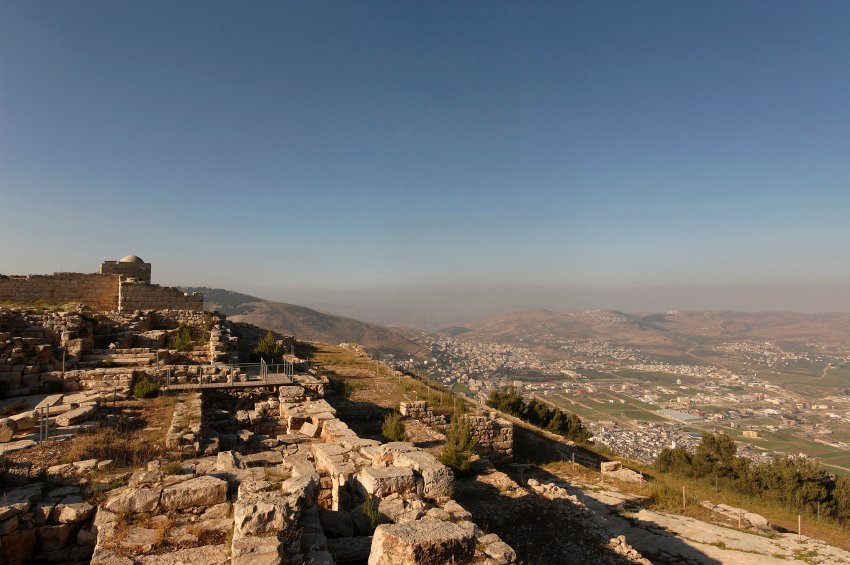
© picture-allianceArcheological remains on the top of Mount Gerizim, the Samaritans' holy mountain. New evidence unearthed by archeologist Yitzhak Magen indicates that an elaborate temple stood here as early as 2,500 years ago, a time when the Temple of Jerusalem was, at most, a simple wooden structure.
Clad in gray coat, Aharon ben Ab-Chisda ben Yaacob, 85, is sitting in the dim light of his house. He strikes up a throaty chant, a litany in ancient Hebrew. He has a full beard and is wearing a red kippah on his head.
The man is a high priest -- and his family tree goes back 132 generations. He says: "I am a direct descendent of Aaron, the brother of the prophet Moses" -- who lived perhaps over 3,000 years ago.
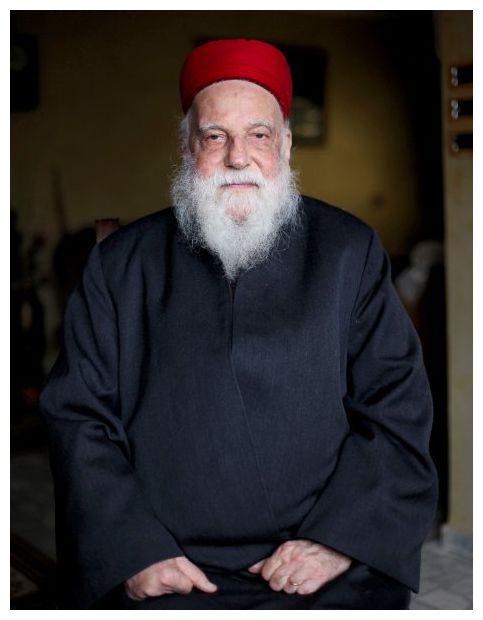
© Amit Shabi/ Laif/ Der SpiegelSamaritan High Priest Aharon ben Ab-Chisda ben Yaacob. He says his family tree goes back 132 generations and that he is a direct descendent of Aaron, brother of Moses.
Ab-Chisda is the spiritual leader of the Samaritans, a sect that is so strict that its members are not even allowed to turn on the heat on the Sabbath. They never eat shrimp and only marry among themselves. Their women are said to be so impure during menstruation that they are secluded in special rooms for seven days.
Outside, on the streets of Kiryat Luza, near Nablus, a cold wind is blowing. The village lies just below the summit of Mount Gerizim. There's a school, two shops and a site for sacrifices. This is home to 367 Samaritans. It's a small community.
Everyone here is required to attend religious services in the synagogue on Saturdays. "Every baby boy has to be circumcised precisely on the eighth day," says the high priest -- not beforehand, and not afterwards.
Most important of all: the sect only believes in the written legacy of Moses, the five books of the
Pentateuch, also commonly known as the
Torah. They reject all other scripture from the
Bible.Once in the MajorityFrom a historical perspective, the Samaritans and the Jews have a common lineage. The
Old Testament recounts that 10 of the 12 tribes in the region of Samaria founded the state of Israel in the year 926 BC. The two other clans lived farther south, in the mountainous region of Judah, with its capital Jerusalem (see map).
In other words, the Samaritans were once in the majority. In ancient times, there were 300,000 of them -- perhaps even over a million. But their strictest law almost led to their downfall. It states: "None of you may settle outside the promised land."
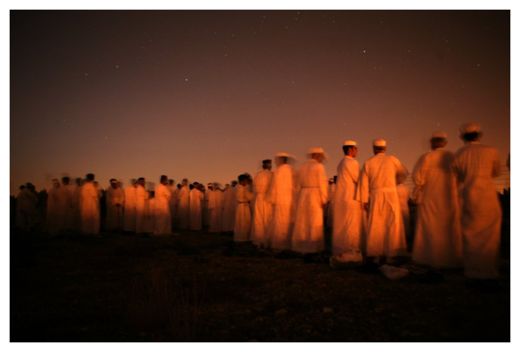
© Agence France-PresseDespite having been nearly wiped out, Samaritans have been living in Israel for over 3,000 years. New evidence indicates that their temple on Mount Gerizim predates the temple in Jerusalem.
As a result, while the Jews fled across the globe to escape the cruelty of foreign rulers, their relatives persevered in the land of their forefathers and suffered under Byzantine tyrants and merciless sultans. At the end of World War I, there were only 146 of them.
"Today we are doing better," says Ab-Chisda cheerily, as he gazes out the window. Now, together with another group in Holon near Tel Aviv, this religious community consists of 751 individuals.
But this population increase only took place because they broke with age-old traditions and rescinded the ban against mixed marriages. In 2004, five Jewish women from Ukraine and one from Siberia, all of them ready and willing to get married, were accepted into the community.
Nevertheless, due to inbreeding, they have a wide range of genetic defects. Trade journals have published studies on the forgotten children of God. They often suffer from muscle weakness and Usher syndrome, also known as deafblindness.
